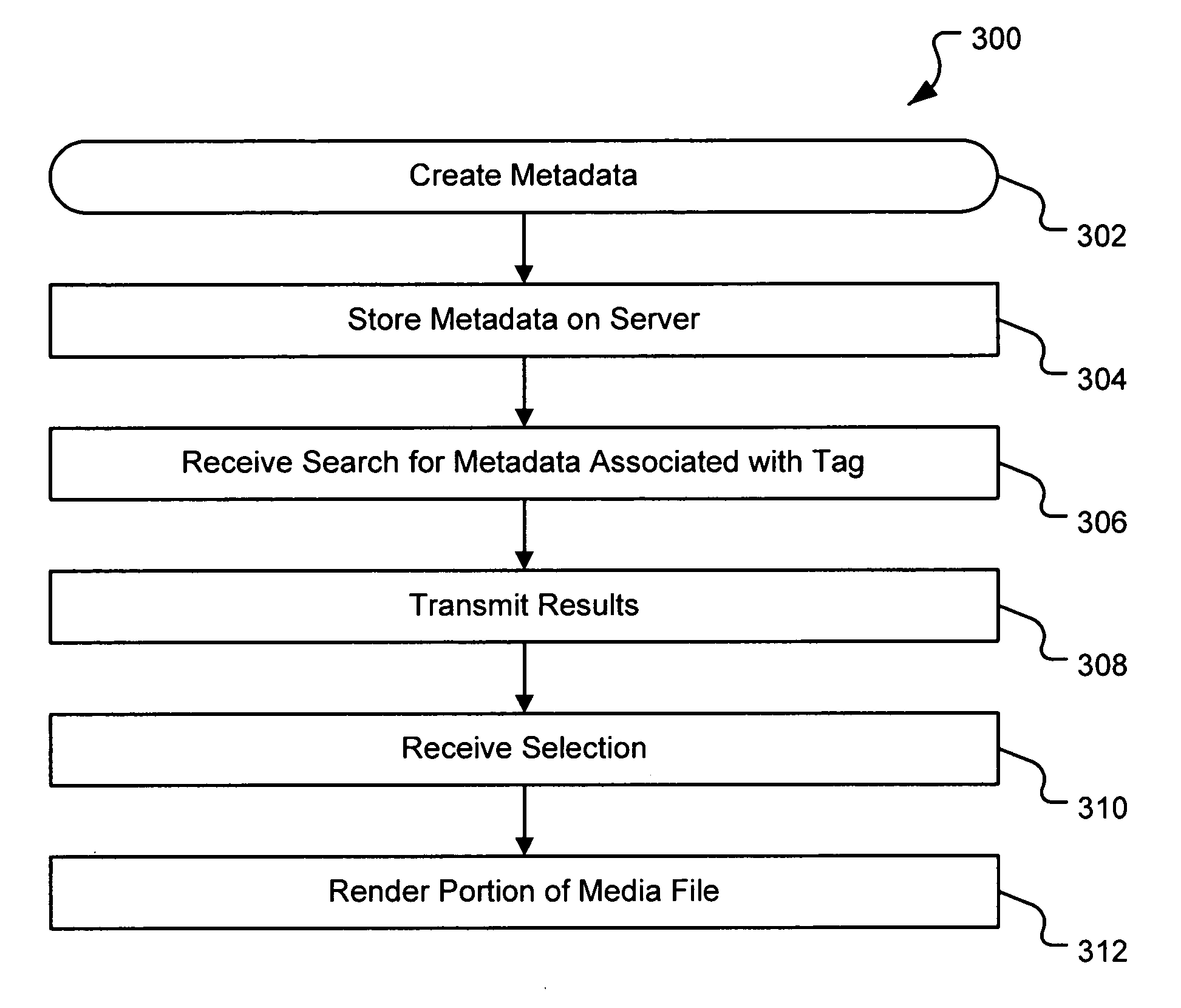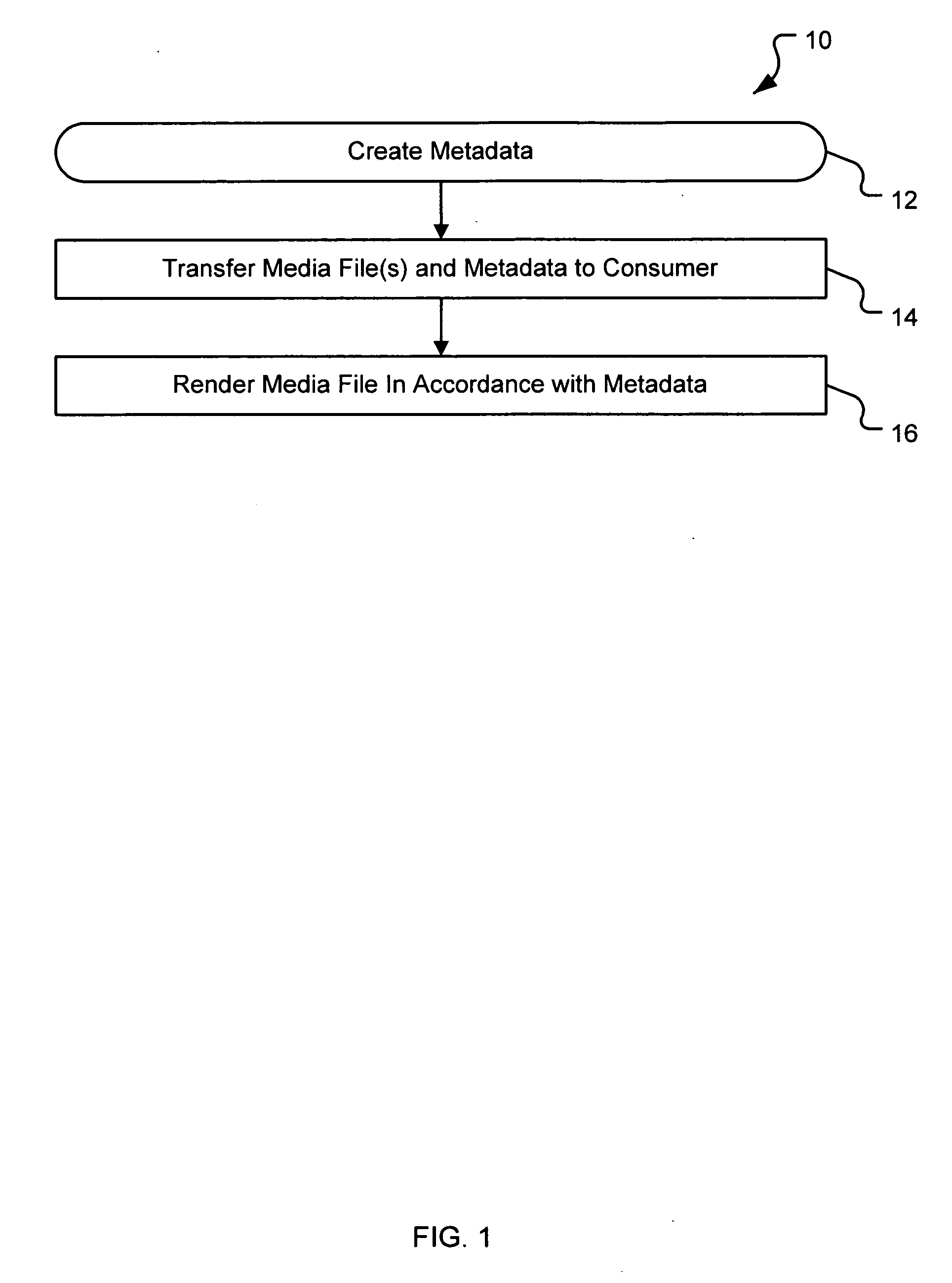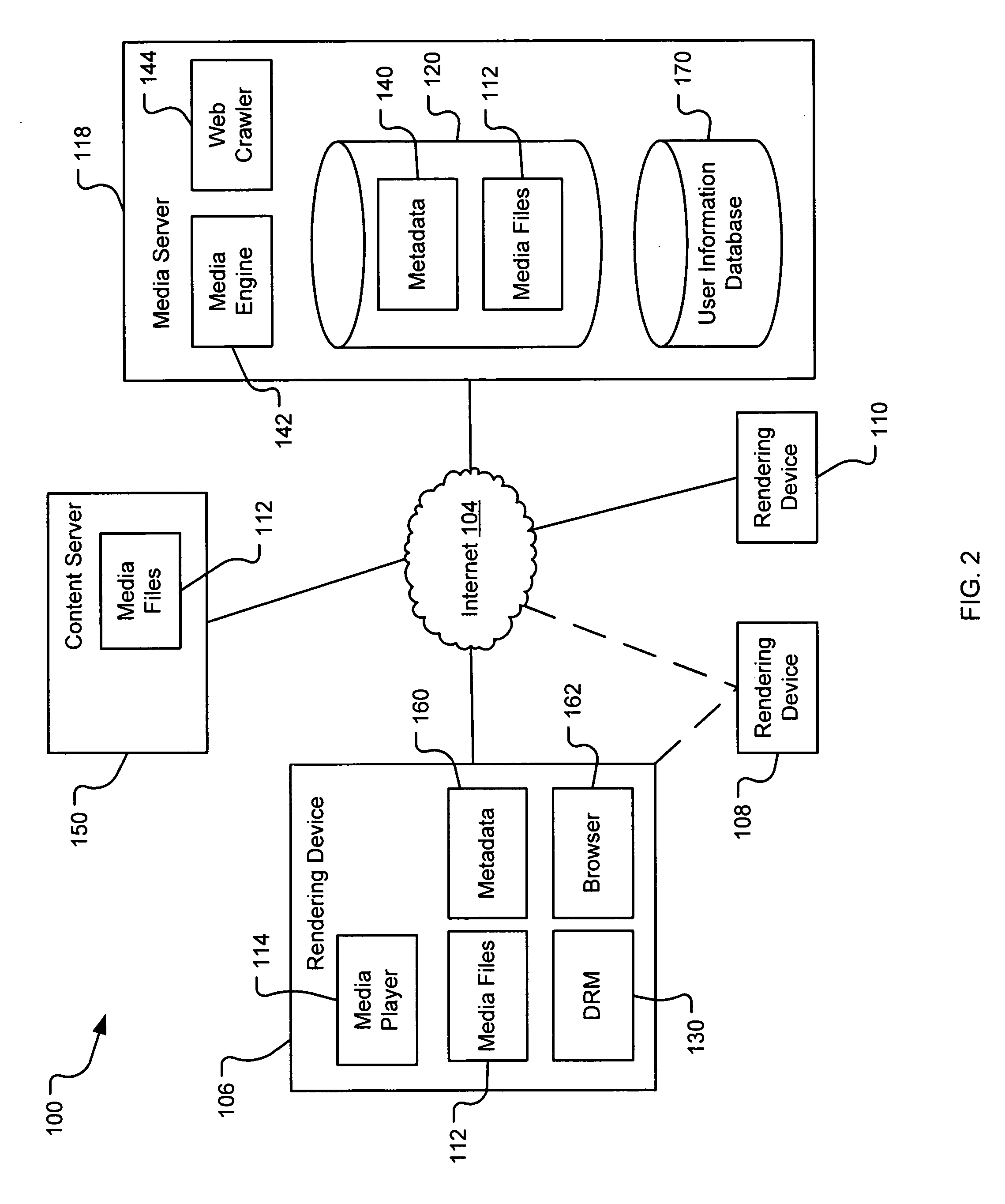Using location tags to render tagged portions of media files
a technology of location tags and media files, applied in multimedia data retrieval, instruments, computing, etc., can solve the problems of affecting the sequential relationship to the original master file, requiring significant effort to edit the media file, and unable to identify a section or a section within the media fil
- Summary
- Abstract
- Description
- Claims
- Application Information
AI Technical Summary
Benefits of technology
Problems solved by technology
Method used
Image
Examples
embodiment 400
[0080]FIG. 4 is a flowchart of an embodiment 400 of a method of creating a portion definition, in the form of metadata, identifying a portion of a pre-existing media file. In the method 400 shown, the creator starts play back of a selected media file using a rendering device capable of capturing the metadata in an initiate rendering operation 402.
[0081] During the rendering, the creator issues a request to the rendering device to identify a portion of the media file in an identify portion operation 404. In an embodiment, the identify portion operation 404 includes receiving a first command from the creator during rendering of the media file identifying the starting point and receiving a second command from the creator identifying an endpoint of the portion of the media file.
[0082] In an alternative embodiment, the creator issues a request to the rendering device to identify a location of the media file in an identify portion operation 404. In this embodiment, only a first command f...
embodiment 500
[0088]FIG. 5 is a flowchart of an embodiment 500 of a method of rendering only a portion of a pre-existing media file. The method 500 shown starts with the receipt of a command by a consumer to render only a portion of a pre-existing media file in a receive render request operation 502. The request may be generated by the consumer selecting, e.g., clicking on, a link on a web page displayed by a browser. Alternatively, the request may be generated by a consumer opening a file, such as a file written in .XML or some other markup language, that can be interpreted by a rendering device. Such a link or file for generating the request may display information to the consumer such a tag associated with the portion to be rendered.
[0089] In an embodiment, the request includes data that identifies the media file and also identifies metadata that can be interpreted to identify a portion of the media file. The metadata can be incorporated into the request itself or somehow identified by the req...
embodiment 600
[0099]FIG. 6 is a flowchart of an embodiment 600 of a method of categorizing portions of pre-existing media files for selective rendering using a media server. In an embodiment the pre-existing media files are stored at remote locations accessible to consumers via one or more communications networks. For example, each pre-existing file may be stored on remote servers under control of the owner of the copyright for the pre-existing media file. Alternatively, the pre-existing media file may be stored locally at the media server.
[0100] The method 600 shown starts with providing a means to consumers to identify portions of a media file and associate the identified portions with a tag in provide identification system 602. A rendering device as described above is one means for identifying portions of a media file and associate the identified portions with a tag. Consumers may then render pre-existing media files obtained from third parties and identify and tag portions of the media file e...
PUM
 Login to View More
Login to View More Abstract
Description
Claims
Application Information
 Login to View More
Login to View More - R&D
- Intellectual Property
- Life Sciences
- Materials
- Tech Scout
- Unparalleled Data Quality
- Higher Quality Content
- 60% Fewer Hallucinations
Browse by: Latest US Patents, China's latest patents, Technical Efficacy Thesaurus, Application Domain, Technology Topic, Popular Technical Reports.
© 2025 PatSnap. All rights reserved.Legal|Privacy policy|Modern Slavery Act Transparency Statement|Sitemap|About US| Contact US: help@patsnap.com



